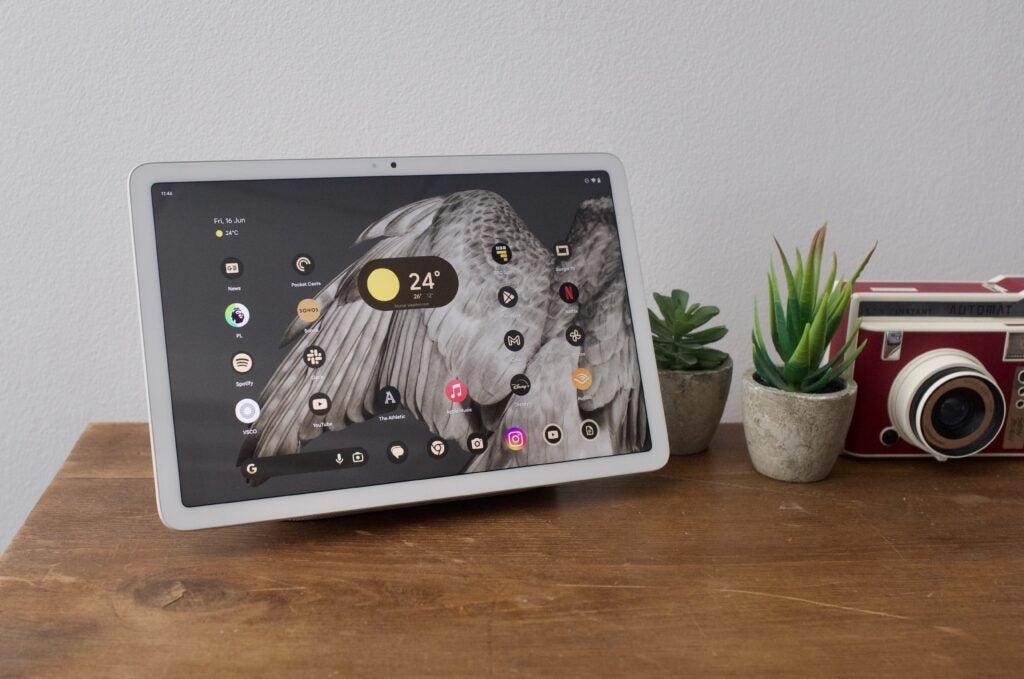Google made a bold move this week.
Less than two hours after Apple revealed the new iPad Air range and top-end iPad Pro range, Google made a tablet-themed announcement of its own.
No, it’s not the Pixel Tablet 2, but instead a new version of the Pixel Tablet sans the hybrid dock/speaker system. Y’know, the one feature that made the Pixel Tablet interesting in the first place?
Frankly, even with a £200/$100 discount compared to the Pixel Tablet & speaker combo, the standalone Pixel Tablet is almost impossible to recommend to the vast majority of consumers.
You see, the £599/$499 Pixel Tablet’s hybrid nature was essentially the reason to pick it up over any other Android tablet, or even an iPad. The idea was that the Pixel Tablet could function as your everyday tablet in use, and when not in use, it could double up as a smart screen like the Nest Hub Max.


It was a feature we praised in our review, helping it stand out from a sea of tablets from the likes of Samsung, OnePlus and even Apple. The tablet goes into what Google calls Hub Mode whenever docked, providing a slimmed-down version of the UI found on the Nest Hub with access to Google Assistant, smart home controls, Google Photos library and more.
It wasn’t quite as impressive as the experience from a full-fat smart display like the Nest Hub Max, missing out on features like facial recognition, and sound quality was lacking, but it did a good enough job as a smart display overall.
That’s important because when it comes to the actual tablet aspect of the Pixel Tablet, it’s pretty damn underwhelming.
The Tensor G2 chipset powering the tablet is fine, but it wasn’t even the most powerful chipset around at its initial 2023 launch despite being used in the likes of the Pixel 7 and even the Pixel Fold, focusing more on AI than pure processing power. That gap is widening in 2024 with huge advancements from MediaTek and Qualcomm, as well as the rollout of the newer Tensor G3 in the Pixel 8 range.
In fact, we found that it was on a par with the OnePlus Pad’s Dimensity 9000 chipset that was first released in 2021 – and the OnePlus Pad is quite a bit cheaper than the Pixel Tablet too. For reference, it can currently be found as little as £359/$399 at the time of writing.


Speaking of the OnePlus Pad, that tablet’s 11.6-inch 144Hz display also makes the Pixel Tablet’s 10.95-inch 60Hz display feel comparatively jittery when swiping around the tablet.
There’s also the fact that, unlike most mid-range and premium tablets, there are no official stylus or keyboard case accessories for the Pixel Tablet, limiting its use to entertainment rather than work or educational purposes.
What I’m trying to get across is that, without the hybrid dock system, the Pixel Tablet simply doesn’t do enough to entice consumers.
The budget/mid-range tablet is an extremely competitive one, with options from Apple now including the £349/$349 iPad 10, as well as the likes of the £359/$399 OnePlus Pad and the £449/$449 Samsung Galaxy Tab S9 FE, all offering a better tablet experience than Google’s standalone Pixel Tablet – and most at a cheaper price point too.

